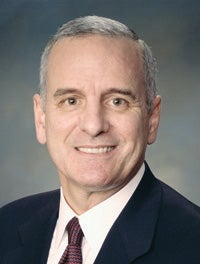Minnesota aims to install health marketplace
Published 10:30 am Sunday, July 1, 2012
ST. PAUL — The idea is to make getting health insurance easy: People enter basic information in a website, learn whether they qualify for subsidies, compare the options and buy a policy. Small business owners can shop for their employees. Those who can get public health coverage are sent to sign up.
Minnesota officials are working quickly to make the vision a reality as they hurry to implement the federal health care overhaul largely upheld Thursday by the Supreme Court. The state aims to win federal approval of its health insurance marketplace by Jan. 1 to avoid getting a one-size-fits-all federal model. Consumers would first see the state’s site during an enrollment period in October 2013.
“Our No. 1 goal is to simplify and help consumers easily make those choices,” Commerce Commissioner Mike Rothman said Friday.
The drive to create a Minnesota-made insurance exchange has been under way for months under Democratic Gov. Mark Dayton, even as Republican lawmakers have resisted getting involved with the overhaul they oppose. The state faces a mid-November deadline to submit its plan. Officials have spent $1.9 million in federal grants so far, with an additional $26.5 million waiting to be spent. Thirteen Commerce Department employees are working on the effort.
“Minnesota can do it better for Minnesota than the federal generic model,” Dayton said.
The governor said he will seek legislation to implement the exchange when the next Legislature convenes in January.
Planners are working on a public-private portal where shoppers can easily compare policies on criteria ranging from prices and out-of-pocket costs to benefit levels, provider networks and quality feedback. A task force headed by Rothman has estimated more than a million Minnesota residents could be using the exchange by 2016, including 500,000 people on government health programs.
Subsidies will be available for those with yearly incomes of up to about $44,000 for an individual or $92,000 for a family of four.
Running the site is estimated to cost $40 million to $80 million a year, according to the Commerce Department. The federal government pays for the first year.
How to pay for it after that is a question that likely will fall to lawmakers next year. The task force is recommending a combination of funding sources, including a cut of premiums or Medicaid, to kick in by mid-2013.
Opposition from some Republicans is vehement.
Sen. David Hann, the lead Republican in the Senate on health issues, called the work on the exchange “a partisan political exercise.” He predicted voters will reject the federal health care law in November by electing Republicans who have promised to repeal it.
“This issue is going to have to be decided by the public,” Hann said. “They’re going to have to decide whether they want to be ruled by this regime, this structure, whether they want to remain a free people or not.”
But Republican allies are pressing Hann and other GOP lawmakers to get involved in the state’s planning now, in light of the Supreme Court ruling.
“If the Republican side doesn’t engage, we could end up with a Dayton exchange, which we would be a little bit more nervous about,” said Scott Fischbach, who heads Minnesota Citizens Concerned for Life, the state’s main anti-abortion group.
The Minnesota Chamber of Commerce is also urging state leaders to get behind the health insurance marketplace. Kate Johansen, the chamber’s health policy manager, said it’s too late to turn back.
“Exchanges are a strong tool — if they are properly implemented — in helping to control costs because they implement free-market principles by allowing consumers to compare apples to apples,” said Johansen, who participated in a work group on financing options for the exchange.
Republican Rep. Steve Gottwalt, the House lead on health care policy, plans to meet with one of Dayton’s top advisers, Human Services Commissioner Lucinda Jesson, to discuss the health care overhaul and issues including the exchange.
“There is no harm in legislative leaders and the administration trying to sit down and have some dialogue on this,” Gottwalt said. “There are some very legitimate concerns about the exchange as it’s envisioned.”
The state’s task force involves top Dayton advisers, Democratic lawmakers and representatives of health care providers and insurers, businesses, unions, tribes, counties and consumer groups.
“We want it to just be very, very user-friendly so people can figure out what will be best for them,” said Sue Abderholden, a task force member who heads the Minnesota chapter of the National Alliance on Mental Illness.




